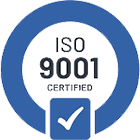
|
HOME > ENVIROGUARD > PRESS RELEASES
EnviroGuard at 30: An Interview with Doug Frazier on How the Company and Industry Have GrownFlooded lead acid, valve regulated lead acid and Ni-Cad batteries continue to be a reliable source of stored energy. Batteries continue to grow in importance globally with the continued deployment of 5G mobile networks, cloud data centers and moves to alternative energy. For 30 years, EnviroGuard has been testing and certifying both innovative rack and spill control systems for mission critical facilities. In this interview, EnviroGuard president Doug Frazier reflects on how the company and industry continue to change. How did EnviroGuard start? What was your first product? The company that would become EnviroGuard was started in 1993 and offered its first battery safety products in August 1995. We developed and patented several modular, liner-based spill control products that are liquid tight upon arrival to the site which reduces installation labor. We started selling them through OEMS, VARS, integrators and manufacturing representatives throughout North America. We focused on manufacturing spill control and environmental health and safety products rather than selling battery systems. In that time, EnviroGuard became a supplier to all major OEMs and our sales have increased by 400% on compliance products. We began testing UFC Zone 1-4, IBC, IEEE moderate and high battery racks, front access battery terminal covers, containment trays and neutralizing and absorption pillows that are UL and FM Global certified. What was the company’s mission at the start? How has that evolved? Since the battery sales divestiture in 2005, our focus has been on spill control and compliance products. We emphasize quality, customer service and our mission is to meet all customer expectations and exceed customer service requirements. We are an ISO 9001-2015 certified business, and our objective is 98% on-time delivery with less than 1% product defects. My background in loss prevention and risk management provides a competitive advantage. As a professional in environmental health and safety, I could see the potential and that market for spill control and racks was underserved. New testing must be deployed to bring spill containment and battery racks up to today’s standards. As an electrical contractor with over 2,000 battery systems installed, we understand how to save end users money. How have customer realized they need to meet today’s safety standards? Early on the fire codes for battery safety were in place, but many companies in the stored energy power industry were non-compliant and unaware of this fact. This meant we needed to complete an education system before end-users would adopt the latest spill containment and seismic rack standards. In these early days EnviroGuard’s team members in conjunction with consulting engineers would educate the end customer and specify the battery spill containment systems and seismic racks being used in the facility. However, this education helped other parties in the industry – OEMs, battery companies and VARs – see the value in battery spill control of VLA batteries. Today, end-users have accepted the fact that both spill control and seismic racking are a necessity for mission critical sites and required in many requests for proposals (RFP). Many end-users have embraced the need for safety products related to flooded lead acid, valve lead acid, and NiCad battery systems. We often draw the analogy between spill control and fire sprinkler head compliance in commercial office buildings. They are not there because the building construction is defective, they are engineered to reduce property damage. What’s been the biggest factor in your success? The people in our company are our biggest factors for success. They are professional, customer centric and keep the customers happy which is critical in a competitive market. I also must give a lot of credit to my wife Toni who has been critical to our success. She heads up our accounting and business operations functions and has had a big impact on our success and frees me up to assist our sales and marketing teams. What is your prediction for the future of the industry? In the near term we’re going to see environmental health and safety teams get more involved in battery room design to ensure safety and local compliance with Authorities Having Jurisdiction who are inspecting for National Fire Protection Assn. (NFPA) 70E and NFPA 855. We expanded our training and nationwide site assessments to assist end users in cost savings. Another trend we’re seeing is more companies are concerned about the reliability of hydrogen detection systems and are looking for a solution that does not have to be calibrated on a quarterly basis. Many battery types emit hydrogen during recharge. Hydrogen’s impact on battery room safety is an unknown for many in the industry which means there are more opportunities to educate. We’ll see a greater understanding that battery room safety is not a “set-and-forget” job, but that there’s a need to consistently review the systems annually when performing battery maintenance. This will have an impact on the neutralizing pillows that line most spill containment systems which get contaminated or lose their effectiveness over time and need to be replaced. Early spill containment deployments need to evaluate these pillows over 10 - 15 years of age and should be replaced at the end of battery life. EnviroGuard now offers both UL-recognized and self-extinguishing pillows that contain our new dustless neutrasorb self-extinguishing pillow material. Lastly, there will be a constant need for ongoing education. We’ll keep up our efforts through EnviroGuard University and encourage others in the industry to take part in educating the industry. |


5534 Olive St.
Montclair, CA 91763-1649
1.909.946.4610 or Toll Free at 1.800.206.9884
Protecting Mission-Critical Facilities and Personnel since 1993
Certified Manufacturer of UL Listed & UL Recognized Products



